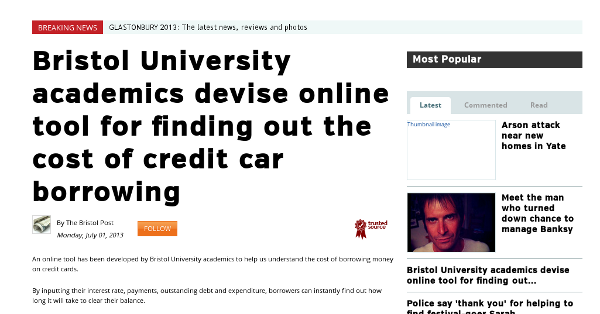Version 2.0 of OGL released
Reposted from Bristol Wireless.
 The British National Archives announced last week that it has released version 2.0 of the Open Government Licence (OGL) following consultation on how the licence could be developed further to reflect new and emerging thinking on the licensing of public sector information.
The British National Archives announced last week that it has released version 2.0 of the Open Government Licence (OGL) following consultation on how the licence could be developed further to reflect new and emerging thinking on the licensing of public sector information.
The OGL is an open licence allowing information to be used and re-used with virtually no restrictions. It is also part of the UK Government Licensing Framework (UKGLF), which was launched in 2010. A wide range of government and other public sector information can be used and re-used under the OGL, which also forms part of the UK government’s policy on transparency and open data.
The basic terms and conditions of the Open Government Licence version 2.0 remain the same as the previous version in that it continues to:
- permit use and re-use of information in any format for both commercial and non-commercial purposes without charge;
- require re-users to publish an acknowledgment of the source of the information;
- exclude personal information from the licence;
- be compatible with other licensing models, such as Creative Commons, and conforms to the Open Definition*.
What has changed is that National Archives have introduced a separate section of the licence headed ‘Non-endorsement’. This is designed to make it clear that the licence does not permit the re-user to suggest that their versions of the information enjoy any official status or have departmental endorsement.
The National Archives is also introducing the OGL symbol, a simple way of identifying when information can be used and re-used under the terms of the Open Government Licence. The OGL symbol was developed by The National Archives with help from the Government Digital Service. The OGL symbol, at a glance, shows that information can be used and re-used under open licensing.
* The definition seeks to define the terms “open”, “open data” and “open content” precisely in the context of data and content so as to ensure “interoperability between different pools of open material.”
 A study of emails carried out between 1st and 30th June 2013 and covering 200,000 mail accounts generating 8.5 mn. emails a day has revealed that over 80% of email traffic is spam and only 9% is legitimate traffic,
A study of emails carried out between 1st and 30th June 2013 and covering 200,000 mail accounts generating 8.5 mn. emails a day has revealed that over 80% of email traffic is spam and only 9% is legitimate traffic,  Nearly one in two French citizens takes a computer on holiday to connect to the internet,
Nearly one in two French citizens takes a computer on holiday to connect to the internet, 
 MIMO, the French inter-ministerial group devoted to the promotion of open source within government, has become a member of the Advisory Board of
MIMO, the French inter-ministerial group devoted to the promotion of open source within government, has become a member of the Advisory Board of 